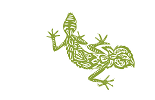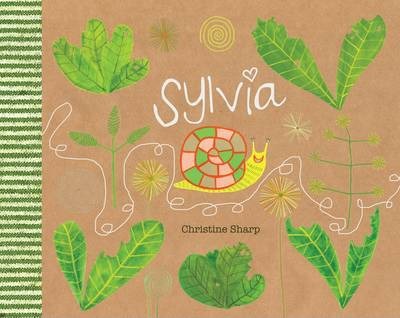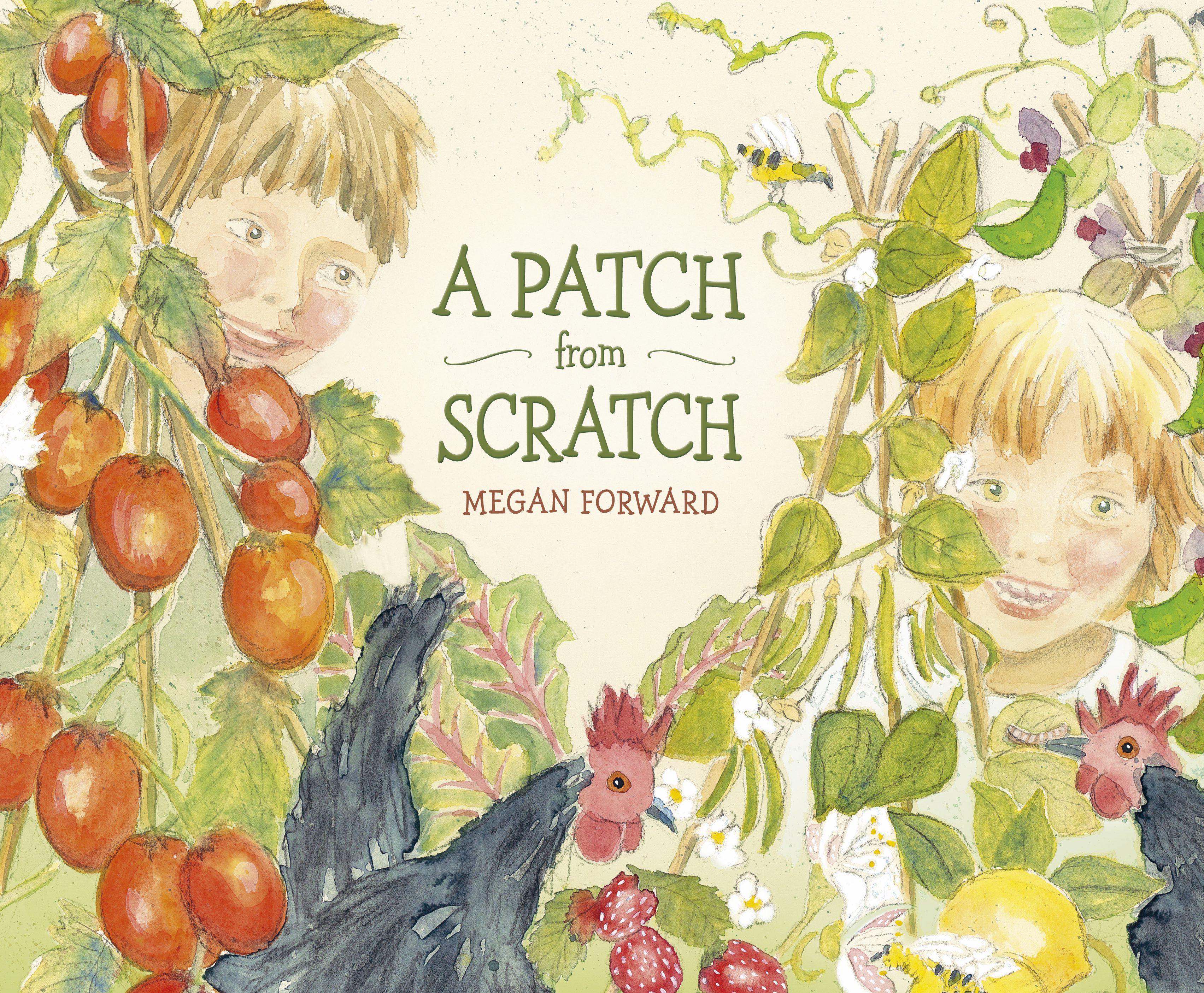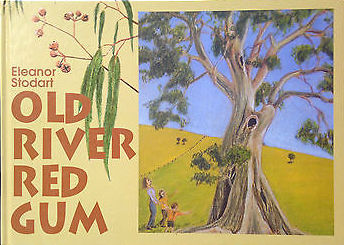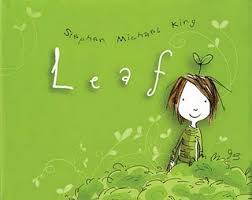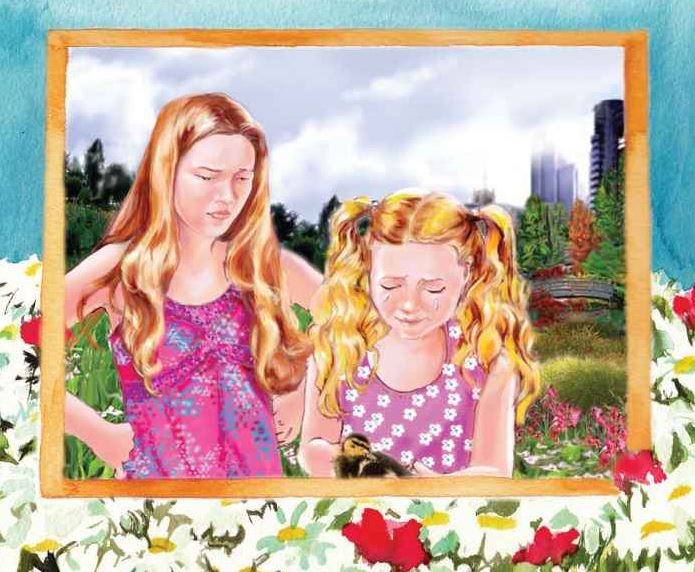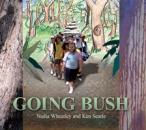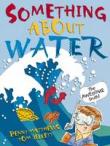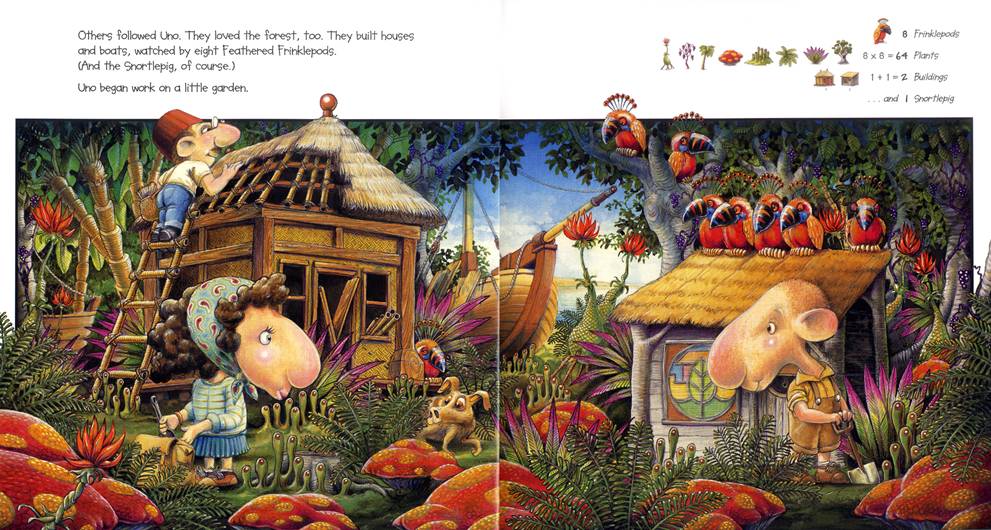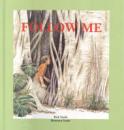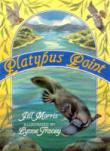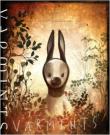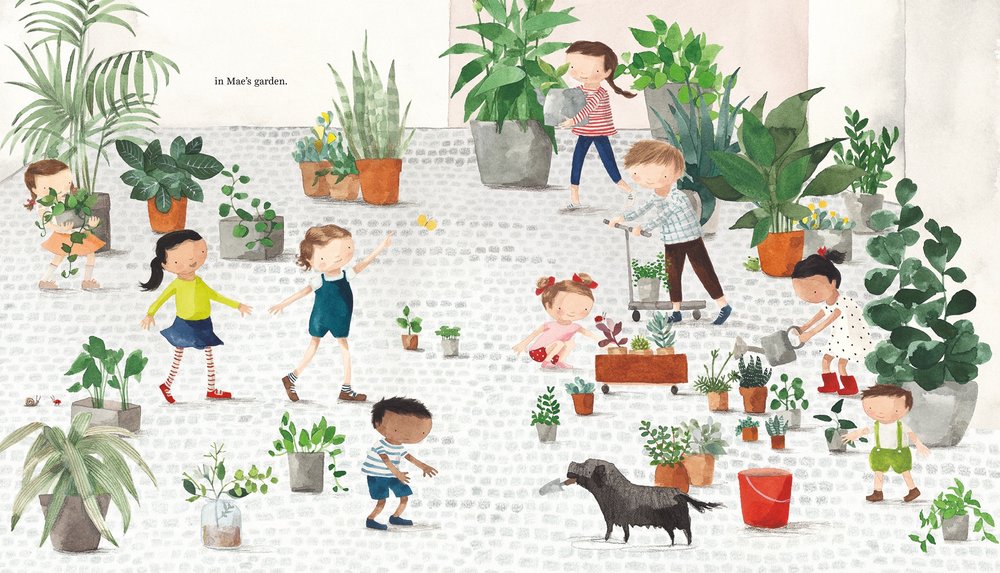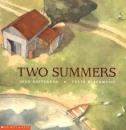AustLit
Researched, compiled and written by Amy Cross
- An Overview
- A Brief History Part I: Settlement to Post-War (Forthcoming) In Progress
-
A Brief History Part II: 1970s to Present Day (Under Development)
In Progress
- A Brief History of the Environment in Children's Literature, Part II: 1970s to Present Day
- 1970s and 1980s: Conservation at the Forefront
- Conservationism: An Environmental, Political and Social Movement
- The 1990s
- A New Millenium
- Contemporary Contexts: Politics, Culture and Literary Criticism
- — Ecocriticism and "Environmental" Literature
- — Postmodernism, Globalisation and Urban Landscapes
- — The Anthropocene
- Contemporary Concerns, Forms and Genres
- — Sustainability
- — The Future
- Fact, Fiction and Genre Mixing
- Explore Further
- Aboriginal Stories and the Environment
- Landscapes and Settings
- Biodiversity and Threatened Species
- Caring for the Environment
- Sustainability
- Built Environments
- Environmental Degradation
- Disasters, Climate Change and Global Warming
- Poetry, Film and Other Narrative Forms
- Education and the Australian Curriculum
- Authors, Illustrators and Publishers
- Award-winning Environmental Literature
-
Bibliography
- List of Works Cited
- Primary Sources - Fiction
- — Picture Books
- — Children's Fiction
- — Young Adult Fiction
- Primary Sources - Other Formats
- — Drama and Musicals
- — Film and Television
- — Mixed Anthologies and Prose
- — Poems and Poetry
- Primary Sources - Non-fiction
- — Autobiographies and Biographies
- — Information Books and Non-fiction
- Secondary Sources
- Project Team and Acknowledgments
-
Sustainable living presents itself in children's literature most prolifically in picture books. There is a growing number of picture books promoting sustainable living either implicitly throughout illustrations of backyards and gardens, or explicitly through protagonists discussing changing habits and practices to lead a more sustainable, and therefore more environmentally friendly, life.
-
Sustainable practices are increasingly being included in books for children, either implicitly in background illustrations like many of Roland Harvey's books, or explicitly, as in books such as How to Bee (see more on this title in Disasters, Climate Change and Global Warming). Often, sustainable living is treated as very beneficial to humans, either financially, or spiritually.
Sylvia is a picture book about a snail who wants to win the love of Simon Green, the gardener who grows the vegetables she likes to eat. Simon Green thinks Sylvia is a pest and wants her to go until her aerial acrobatics convince shoppers to buy all of his organic, snail-bitten produce. Sustainable living is presented as mutually beneficial for both humans and the environment.
-
A Patch from Scratch provides a well rounded example of sustainable living practices by tracking a family's progress to "live more like people on a farm".They begin by drawing plans for their backyard to make sure vegetables and fruit get the sun they need; they also buy chicks. The child narrator talks about the compost, chickens, the importance of grubs and insects, and "how composting is good for the environment". The family is pictured all working together to build everything themselves, and to grow and care for their vegetables as naturally and as organically as possible, using homemade pest control for example.
As the "patch" grows and expands, neighbours begin to share and exchange goods like eggs, apples and seedlings. The detailed text covers every aspect including the necessity of bees, practising patience while some fruits take longer than others to grow, plant diaries, germination, all with clear messages that these practices are helpful to the environment, and that biodiversity is crucial. It closes by asking the reader "What will you grow in yours?" There is factual information at the back of the book including recommended reading for starting your own self sufficient vegetable garden, as well as recipes, and boarder text with messages about sustainability, e.g. "Sustainable gardening means protecting the environment we need to grow food in so it stays healthy." A Patch from Scratch importantly illustrates how a child reader may contribute and act in a sustainable way; or, how to be an ecocitizen.
Other examples include Enough Apples by Kim Kane and Herbert Peabody and His Extraordinary Vegetable Patch by Bianca C. Ross. Try a search for 'vegetable growing', 'sustainable living', or 'sustainability', and see also the 'Urban Greening' tile in 'A Brief History'.
-
Most children's books about the environment focus on protecting an animal or species, or a particular setting, such as the Great Barrier Reef. A smaller number focus on flora; plants and flowers are often part of a larger narratives about gardens, or 'growing things' without necessarily being about conservation.
There are however, some that use plants or trees to illustrate the passage of time and destruction and/or conservation of the environment. Old River Red Gum by Eleanor Stodart is a great example of this. It is an illustrated poem in which a person imagines the life span of a single gum tree. The lone river red gum stands throughout time as the seasons, and human settlement impact the environment around it. Early on, the gumtree supports diverse life such as spiders, possums, birds, and shaded Aboriginal communities and platypuses in streams. Then land is cleared to make room for farming, which in turn impacts the ability of the gum tree to recover after extreme weather events (such as droughts and floods) and bushfires, and so on. The endpages contain additional illustrations and statements about how to conserve and live sustainably, such as 'use local produce where you can', 'avoid packaging where you can', and 'compost all vegetable and garden waste'.
See also The Story of Rosy Dock by Jeannie Baker, which is about an introduced plant species 'rosy dock'. The text of the story traces the Finke River as it changes over seasons, and how it transports seeds throughout the surrounding lands after torrential rains: 'And now, when the rains have watered the desert, rosy dock, the plant with beautiful red seedpods, is spreading like a great red blanket further than they eye can see.' This last image of the spreading rosy dock is accompanied by illustrations of rabbits, also an introduced species. The illustrated side of the story is about the river and seeds as well, but also features old woman who presumably is responsible for introducing the seeds to the area. In each illustration she seems out of place, and does not seem to belong: she keeps a pet cat which eyes off the native birdlife and does not appear to understand the implications of living so close to the river during the wet season.
-
In Stephen Michael King's wordless picture book Leaf a young boy sprouts a leaf from his head after a bird drops a seed on it. The illustrations show the boy in various stages of play, out in the rain, surrounded by bees, sunshine, and also watering the leaf on his head - all aspects of nature required to grow something. After reading a gardening book, he falls asleep and dreams of various threats to the seedling and wishes to protect it. After he is sadly given a haircut, he takes the seedling and plants it in the ground. The remaining illustrations show the seedling growing, as the boy does, and eventually he brings his family to see the fully grown tree which is now large enough to support wildlife.
Another example is Bush Secrets in which a grandfather and granddaughter share a secret about a special place that houses native wildflowers and vines. Although the story is about family bonding, it is through protecting the wildflowers and the environment that the family members bond. See also Eco Warriors to the Rescue!, a how-to on caring for and protecting native flora, and Come and Meet Us : An Australian ABC, an alphabet poetry book about native plants and flowers (scientific names are included). Its final poem, from Australian flora's point of view, asks "When you find us, please let us stay there that way", and proceeds to detail why it is important to leave native plants where they are found and the life that depends on them.
-
-
(Display Format : Landscape)
Parks and Conservation Areas
Below is a sample of children's works with the subject 'Parks and Conservation Areas'. Try also searching for 'Australia Zoo' or 'Great Barrier Reef' for example.
N.B. Image above from 'Lame Duck Protest', found online.
-
 6582380593030418721.png
6582380593030418721.png Amazing Animals of Australia's National Parks Gina Newton , 2016 single work non-fiction
Amazing Animals of Australia's National Parks Gina Newton , 2016 single work non-fictionAbstract: The animals of Australia are amazing! Find out what some of them look like and where you might see them. Whether you're on a trip to a national park or relaxing in a comfortable spot, you'll love dipping into this book. It includes 55 national parks and reserves and is full of up-to-date fascinating facts for more than 120 animal species, large and small.
-
Abstract: Matt saves a young galah and his growing attachment to the bird leads him to a greater concern - saving the huge gum trees on the recreation ground on which the birds perch.
-
Abstract: Children discover the Wolli Creek Valley south west of Sydney, New South Wales.
This picture book is based on a project between Nadia Wheatley and Ken Searle, and the Inter-school Harmony Committee. The text engages with Aboriginal knowledge to emphasise the value of 'land'.
According to Massey, Going Bush "offers readers pathways to sustainable futures" (p.35).
-
Abstract: When Hanna and her younger sister Zoe find a duckling with a broken leg in a nearby park, they are determined to nurse it back to health. But after doing so, they realise that an even greater threat to the duckling has appeared: someone wants to develop the park into a shopping centre! The duck becomes the rallying point for the girls and their neighbours, who stage a Lame Duck Protest. But will they succeed? Will the duckling's parkland home be preserved? The book deals with issues of conservation and wildlife preservation in a touching way, and is accompanied by beautiful sketches and watercolour illustrations.
-
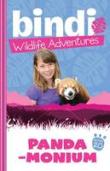 3337846814053127818.jpg
3337846814053127818.jpg Panda-Monium Ellie Browne , Bindi Irwin , 2011 single work children's fiction
Panda-Monium Ellie Browne , Bindi Irwin , 2011 single work children's fictionAbstract: Australia Zoo sends its red panda keeper, Vicki to spend some time researching the red panda in the wild. Bindi comes along to help out, and before long becomes embroiled in a fight to create the world's first protected sanctuary for the super-cute red panda.
-
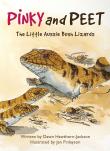 Image courtesy of publisher's website.3377498871481871642.jpg
Image courtesy of publisher's website.3377498871481871642.jpg Pinky and Peet : The Little Aussie Bush Lizards Dawn Hawthorn-Jackson , 2015 single work picture book
Pinky and Peet : The Little Aussie Bush Lizards Dawn Hawthorn-Jackson , 2015 single work picture bookAbstract: Pygmy Bluetongue Lizards were rediscovered near Burra, South Australia, Australia in 1992. Prior to this they had not been seen since the 1950’s. Thanks to research and conservation efforts, these little lizards can be found on some pastoral land and grasslands in the Aussie bush.
-
 3790864635941363116.jpg
3790864635941363116.jpg
 This image has been sourced from online.2522782395244174422.jpg
This image has been sourced from online.2522782395244174422.jpg
 This image has been sourced from online.7218046186646556075.jpg
This image has been sourced from online.7218046186646556075.jpg Swan Song Colin Thiele , 2002 single work children's fiction
Swan Song Colin Thiele , 2002 single work children's fictionAbstract: Mitch Bird, the son of a wildlife ranger, lives in the Coorong - He rears a wild swan which becomes his constant companion and ultimately helps save his life. When Mitch discovers an abandoned swan's egg and takes it home, his park ranger father doesn't approve. But this proves to be the start of a heartwarming friendship.
This novel is set in Coorong National Park, South Australia.
-
-
(Display Format : Landscape)
Recycling and Upcycling
Below is a sample of children's works about 'Recycling' and reusing or upcycling in sustainable ways.
N.B. Image above is from 'What Hannah Found', found online.
-
 This image has been sourced from online.6315157189521548373.jpg
This image has been sourced from online.6315157189521548373.jpg Bird to Bird Claire Saxby , 2018 single work picture book
Bird to Bird Claire Saxby , 2018 single work picture bookAbstract: A bird drops a seed to the floor of the forest. The seed grows into a sapling, then a tree. The tree is felled and taken to a busy city. Bird to Bird is the story of one bird, one seed, one tree.
A story about the lifecycle of a tree, whose timber is recycled and reused in various ways over a long period of time. While there is a theme of sustainability and re-use of materials, there is a sadness in the language when the tree is first cut down, and throughout the book: When growing is done, the tree leaves the forest [is chopped down] bound for the hungry city.
-
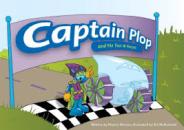 6012884671204392464.jpeg
6012884671204392464.jpeg Captain Plop and the Tour de Recycle Hayley Morton , 2013 single work picture book
Captain Plop and the Tour de Recycle Hayley Morton , 2013 single work picture bookAbstract: This uses a cycling race theme to introduce primary students to the concept of treating and recycling wastewater.
-
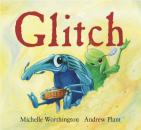 Image courtesy of publisher's website.7020230296551813609.jpg
Image courtesy of publisher's website.7020230296551813609.jpg Glitch Michelle Worthington , 2017 single work picture book
Glitch Michelle Worthington , 2017 single work picture bookAbstract: Glitch spends his life searching through mountains of mouldy mess at the dump. He wants to make the fastest billycart ever. This year, he will be competing in the Big Race! But will his twitch stop him from winning?
Glitch, a weevil, uses recycles rubbish from the dump to build a billycart. The illustrations of the rubbish heaps convey the vast waste left by people. The illustrator dedicated this book "To the eco-warriors - fighting to stop us rubbishing this planet."
-
 Image courtesy of publisher's website.5193983589802833863.jpg
Image courtesy of publisher's website.5193983589802833863.jpg
 This image has been sourced from online.5934272684254252547.jpg
This image has been sourced from online.5934272684254252547.jpg The Patchwork Bike Maxine Beneba Clarke , 2016 single work picture book
The Patchwork Bike Maxine Beneba Clarke , 2016 single work picture bookAbstract: When you live in a village at the edge of the No-Go Desert, you need to make your own fun. That's when you and your brothers get inventive and build a bike from scratch, using everyday items like an old milk pot (maybe mum is still using it, maybe not) and a used flour sack. You can even make a numberplate from bark, if you want. The end result is a spectacular bike, perfect for going bumpity-bump over sandhills, past your fed-up mum and right through your mud-for-walls home.
The central themes of a The Patchwork Bike are resourcefulness and recycling. Full teacher's notes are available here.
-
Abstract: This play deals in a humorous vein with the more serious issues of recycling. The paper inhabitants of an office are brought to life and given a voice as to what should occur when they have outlived their conventional usefulness. Percival P. Paper and Cornelia Cardboard give voice to their continued usefulness and, after Percival's initial prejudices are overcome, combine to force the tyrannical Malpractice Mainmongrel of Monopolizing Megalomaniacs to introduce recycling into the 5000 floors of the building, by organising a recycling riot in which the entire building is engulfed in paper.
-
 This image has been sourced from online.4619589745790772952.jpg
This image has been sourced from online.4619589745790772952.jpg Seagull and Heron Margaret Dunkle , 2008 single work picture book
Seagull and Heron Margaret Dunkle , 2008 single work picture bookAbstract: A trio discover a set of environmental problems faced by the children and animals in the cities and surrounding countryside. Readers are also introduced to the local "Pemulung" or scrap collectors in an attempt to explain their very simple and essential role in the process of scrap collecting and recycling on the island.
This book is part of the Clean Bali series.
-
Abstract: Mr Fowler, Robbie's teacher at school, explains how the water cycle works, and says theres a lot kids can do to help the planet. This book shows how small things can make a big difference.
-
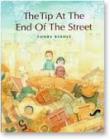 4597713707227175846.jpeg
4597713707227175846.jpeg The Tip at the End of the Street Tohby Riddle , 1996 single work picture book
The Tip at the End of the Street Tohby Riddle , 1996 single work picture bookAbstract: No one believes there's treasure at the tip at the end of the street, but Carl and Minie do. They've found old bicycles, harpsichords and flying machines. One day they find a different kind of treasure - an old man. And they decide to take him home. The treasure he brings Carl and Minnie is beyond measuring, because it's the most precious of all - the everlasting kind.
For further reading, see Trash Aesthetics and Utopian Memory: The Tip at the End of the Street and The Lost Thing by Kerry Mallan for a discussion on trash, waste management, and recycling in The Tip at the End of the Street and The Lost Thing.
-
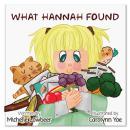 This image has been sourced from online.8856599638114585259.jpg
This image has been sourced from online.8856599638114585259.jpg What Hannah Found Michelle Lowbeer , 2014 single work picture book
What Hannah Found Michelle Lowbeer , 2014 single work picture bookAbstract: This is a story about a girl called Hannah and the different things that she finds when searching for treasure in recycling and disposal areas.
-
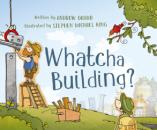 Image courtesy of publisher's website.4987487483408645227.png
Image courtesy of publisher's website.4987487483408645227.png
 This image has been sourced from online.1167383198648877799.jpg
This image has been sourced from online.1167383198648877799.jpg Whatcha Building? Andrew Daddo , 2017 single work picture book
Whatcha Building? Andrew Daddo , 2017 single work picture bookAbstract: The old milk bar on the corner is coming down to make way for something new. Little Davey Durak is gathering scrap a short piece of wood here, a long piece there. But what's Davey building? Big Bruce the Builder wants to know, but Davey won't tell...
-
-
(Display Format : Landscape)
Rehabilitation and Regeneration
Rehabilitation and Regeneration is a subject term referring to stories about renewing and restoring areas impacted by human habitation, negligence and pollution. Such stories are also strongly about sustainability, and often highlight the role of community in achieving such goals. Try searching 'rehabilitation and regeneration', 'sustainability', 'parks and conservation areas' for further examples.
N.B. The image above is from 'Uno's Garden', found online.
-
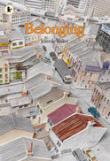 Cover image courtesy of publisher.6800996788948902665.jpg
Cover image courtesy of publisher.6800996788948902665.jpg Belonging Jeannie Baker , 2004 single work picture book
Belonging Jeannie Baker , 2004 single work picture bookAbstract: An alienating city street gradually becomes a place to call home. Little by little, baby Tracy grows. She and her neighbours begin to rescue their street. Together, children and adults plant grass and trees and bushes in the empty spaces. They paint murals over old graffiti. They stop the cars. Everything begins to blossom. Belonging explores the re-greening of the city: the role of community, the empowerment of people and the significance of children, family and neighbourhood in changing their urban environment. The streets gradually become places for safe children's play, and community activity and places for nature and wonder.
-
 6099939361474022834.jpg
6099939361474022834.jpg Bizi the Musk Duck of Barren Box Swamp Ann-Maree Thompson , 2012 single work picture book
Bizi the Musk Duck of Barren Box Swamp Ann-Maree Thompson , 2012 single work picture bookAbstract: Based on the true environmental success story of Barren Box Swamp. Bizi the Musk Duck cannot believe his swamp is dying. How can he leave his beautiful home? How can it be saved?
At first the animals of Barren Box Swamp are concerned about the presence of trucks in their wetlands, but it seems humans have come to help restore the wetlands. This is based on the story of the Barren Box Storage and Wetlands environmental project to save water and conserve the environment. More information on this project, as well as musk ducks, is available at the back of the book.
-
Abstract: A little boy finds a seedling growing on the roof. He saves it, cares for it and when it grows big enough, he plants it out in his yard. Many years later, the seedling has grown into a giant fig tree that has become a part of family history and a local landmark. But one day a huge storm comes ....
-
Abstract:The people of Milltown are concerned when council bulldozers move in to construct a new dam. Mill City needs more water, so a dam must be built. But why disturb the peace of Milltown? What will happen to the platypuses in Mill Creek when the water level rises, and to the animals that inhabit the rainforest when the trees are removed? With the passing of time all these questions are answered and the platypuses return to a new, larger lake. But, for the people of Milltown, life has changed forever.
A powerful picture book designed as a collection of letters between neighbours, journalists and council members about the environmental impact of a newly constructed dam. While the habitat of platypuses and koalas is heavily impacted, the new dam also offers an alternative areas for the species to live, though not without significant cost.
-
Abstract: This is a children's educational picture book that looks at the history of an outback waterhole in the Australian desert. The book looks at how the waterhole developed over the years and the abundant wildlife that is attracted to it.
This book tracks the waterhole as it develops, is inhabited temporarily by Aboriginal people, settled by white people and farmed with cattle. An environmentalist then looks at the waterhole and proceeds to convince the farmer to regenerate the waterhole. It details how this is done, and emphasises the importance of conservation. The narrative also conveys the knowledge and wisdom of Aboriginal people taking only what they needed from land, and moving on without destroying the waterhole habitat.
-
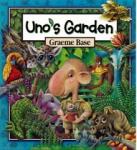 Image courtesy of Penguin.Base_Unos Garden_FH9g.jpg
Image courtesy of Penguin.Base_Unos Garden_FH9g.jpg
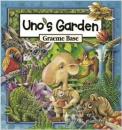 This image has been sourced from online.6734704754183938694.jpg
This image has been sourced from online.6734704754183938694.jpg
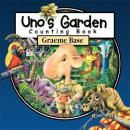 This image has been sourced from online.7101340592892418206.jpg
This image has been sourced from online.7101340592892418206.jpg Uno's Garden Graeme Base , 2006 single work picture book
Uno's Garden Graeme Base , 2006 single work picture bookAbstract: Uno builds a home and garden in the magnificent forest among the playful puddlebuts and feathered frinklepods, but as the place becomes more and more popular, it is overtaken by tourists and buildings until the forest and animals seem to disappear altogether.
-
Abstract: Once, the only sounds to be heard were the buzzing of bees in the grass, the murmuring of moles in the earth, and the song of birds in the sky. These warmed the hearts of those who cared to listen – until the others came to fill the sky with buildings and the air with a cacophony of noise. With dramatically lit artwork and a spare, intriguing text, Varmints tells of a pastoral world in need of protection and of the souls who love it enough to ensure its regeneration.
-
-
(Display Format : Landscape)
Urban Greening and Community
Urban Greening is an increasing and relatively new narrative in environmental children's literature. These texts are primarily about 'transformation' - how urban spaces can be utilised and transformed to build and engage with community. Sustainability and sustainable living are heavy themes in these texts.
N.B. Image above is from 'Florette', found online.
-
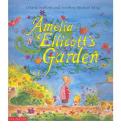 This image has been sourced from online.2774927658602089540.jpg
This image has been sourced from online.2774927658602089540.jpg
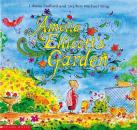 This image has been sourced from online.2129742055477964716.jpg
This image has been sourced from online.2129742055477964716.jpg Amelia Ellicott's Garden Liliana Stafford , 2000 single work picture book
Amelia Ellicott's Garden Liliana Stafford , 2000 single work picture bookAbstract: Amelia Ellicott lives with her cat Mustafah, next door to a block of flats, She is proud of her garden and her chickens, but she has no one to share them with...Until one day a storm destroys it all and Amelia discovers the value of friendship.
Amelia is unhappy to see that over time her local neighbourhood has transformed from houses to apartment buildings with limited gardens and green spaces around. Unknown to her, the neighbours are envious of her vegetables and gardens. After a storm, she allows the neighbours to help her move her garden and a community develops around the garden.
-
 Cover image courtesy of publisher.6800996788948902665.jpg
Cover image courtesy of publisher.6800996788948902665.jpg Belonging Jeannie Baker , 2004 single work picture book
Belonging Jeannie Baker , 2004 single work picture bookAbstract: An alienating city street gradually becomes a place to call home. Little by little, baby Tracy grows. She and her neighbours begin to rescue their street. Together, children and adults plant grass and trees and bushes in the empty spaces. They paint murals over old graffiti. They stop the cars. Everything begins to blossom. Belonging explores the re-greening of the city: the role of community, the empowerment of people and the significance of children, family and neighbourhood in changing their urban environment. The streets gradually become places for safe children's play, and community activity and places for nature and wonder.
-
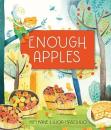 This image has been sourced from online.54441808447007857.jpg
This image has been sourced from online.54441808447007857.jpg Enough Apples Kim Kane , 2017 single work picture book
Enough Apples Kim Kane , 2017 single work picture bookAbstract: There was once a tiny man who loved apple pie, and the apples from his orchard - tart and sweet and clear - made the perfect filling. When his orchards are crowded out by a growing city, he learns how to transform his altered world so he can continue to bake the perfect apple pie. An inspiring story about urban greening and creative adaptation to change.
After the city impedes the tiny man from growing his orchard, he looks for water, sunlight and clean crisp air in the city. He finds places to plant seeds 'higgledy-piddledy' around the city. Some time goes by, and trees can be seen sprouting all over the city, including on top of buildings and from inside polluting chimneys. The tiny man sells his apples and shows other people how to grow them too. While the tiny man has lost his farm, he has transformed the city into a green space once again.
Sustainable living and community, and sustainability themes can be found in this book.
-
 This image has been sourced from online.1144392015182207963.jpg
This image has been sourced from online.1144392015182207963.jpg
 This image has been sourced from online.1469808174195464300.jpg
This image has been sourced from online.1469808174195464300.jpg Florette Anna Walker , 2017 single work picture book
Florette Anna Walker , 2017 single work picture bookAbstract: When Mae has to move house from the country to the city, she feels lonely and sad - until she discovers a beautiful place full of green in the centre of Paris. What she finds there sparks something special and beautiful that will make her feel much more at home.
When Mae moves house she tries to bring nature with her, she draws flowers, insects, birds and other animals and plants on the building around her, and the cardboard boxes used during the move, but these illustrations keep disappearing. When she finds an indoor garden, she takes a sample plant back to her home and proceeds to help it grow. This turns into a community garden near her house. She has made friends whom she teaches to garden, and no longer feels sad.
-
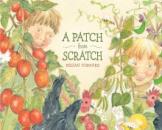 Cover image courtesy of publisher.4730513836225098140.jpg
Cover image courtesy of publisher.4730513836225098140.jpg
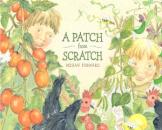 This image has been sourced from online.2375541383922870612.jpg
This image has been sourced from online.2375541383922870612.jpg A Patch from Scratch Megan Forward , 2016 single work picture book
A Patch from Scratch Megan Forward , 2016 single work picture bookAbstract: Jesse and Lewis want to grow their own fruit and veggies, just like people do on a farm. They're going to dig and build, plant and grow, and when they're finished they're going to have a feast!
-
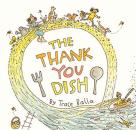 Cover image courtesy of publisher.3629669145889566138.jpg
Cover image courtesy of publisher.3629669145889566138.jpg The Thank You Dish Trace Balla , 2017 single work picture book
The Thank You Dish Trace Balla , 2017 single work picture bookAbstract: A story about gratitude, community and eating locally, from a bestselling picture-book maker.
-
-
(Display Format : Landscape)
Water: A Precious Resource
Water, in all its forms, is regularly depicted in children's literature:saltwater and freshwater settings are used to illustrate biodiversity and negative impacts of humans on the environment; Disappearing water and drought, are also common themes; as well as 'histories' of water to show just how many people, animals, plants and ecosystems are dependent upon it.
See also 'Ocean Settings and Underwater Worlds' and 'The Murray River' in Landscapes and Settings, as well as Environmental Degradation. Try also searching 'drought'.
N.B. Image above is a sample from 'On the River', found online.
-
 Image courtesy of publisher's website.3174163896991926087.jpg
Image courtesy of publisher's website.3174163896991926087.jpg Big Fella Rain Beryl Webber , 2017 single work picture book
Big Fella Rain Beryl Webber , 2017 single work picture bookAbstract: Way up north, lightning flashes, thunder rolls, and frogs sing a chorus. Big fella rain coming.
This picture book is a celebration of nature, the seasons and rain. As the wet season begins, the narrative follows the rain drops unto land, showing the impact it has on the ecosystem and animal life it supports. It is illustrative of biodiversity and sustainability.
-
Abstract: The Captain Plop series contains three books about water-saving, desalination and sewerage. It is published by the South Australian Water Corporation.
-
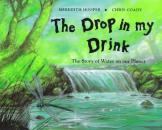 2961750152915285379.jpg
2961750152915285379.jpg
 5271835156321154295.jpg
5271835156321154295.jpg The Drop in My Drink : The Story of Water on our Planet Meredith Hooper , 1998 single work picture book
The Drop in My Drink : The Story of Water on our Planet Meredith Hooper , 1998 single work picture bookAbstract: Water tumbles inside clouds, drifts as snowflakes, collects in puddles. Water creeps up the stems of sunflowers and slips down the throats of tigers. Where does this marvellous liquid come from? How does it behave? Why is it so important? Well-known science writer Meredith Hooper tells the amazing story of water on our Earth. Beginning before the Earth was formed and continuing to the present day, the dramatic narrative explains the nature of water and the water cycle, and the collection between water and the development of life on our planet.
Imagines the infinite cycle of water as it traverses the continents, oceans, as it is consumed by animals, evaporated, becomes rain, and finally comes out of a tap into a boy’s glass – ‘the drop in my drink’. The back of the book contains factual information on water, as well as a section titled ‘Looking after water’, which describes the dependency on water of every living thing. It also notes the impact that industry and agriculture have had on water, and calls for the readers to preserve the precious resource.
-
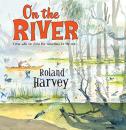 Cover image courtesy of publisher.477074966895031633.gif
Cover image courtesy of publisher.477074966895031633.gif
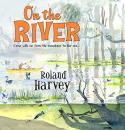 Cover image courtesy of publisher.421699905657464041.jpg
Cover image courtesy of publisher.421699905657464041.jpg On the River Roland Harvey , 2016 single work picture book
On the River Roland Harvey , 2016 single work picture bookAbstract: Follow the mighty Murray River from the mountains to the sea on an epic journey with Roland Harvey and his pelican friend, in this glorious picture book full of humorous, intricate illustrations and fascinating information. Roland Harvey and his new pelican friend are off on an adventure to walk, fish, canoe, raft, windsurf, sail, paddle-steam, houseboat and even fly their way along the Murray River, from its smallest beginnings in the high country to where it meets the sea. Together they discover the story of the river: its secrets, history, ecology, people and animals. And you're invited, too!
On the River is about the Murray River and shows the significant impact of humans on the river and the life it supports.
-
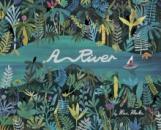 Cover image courtesy of publisher.4681156225964508357.jpg
Cover image courtesy of publisher.4681156225964508357.jpg A River Marc Martin , 2015 single work picture book
A River Marc Martin , 2015 single work picture bookAbstract: So begins an imaginary journey from the city to the sea. From factories to farmlands, freeways to forest, each new landscape is explored through stunning illustrations and poetic text from this award-winning picture-book creator.
The river runs through a city, which is depicted with heavy air pollution from cars and industrial buildings, which are also leaking waste into the river. It is clear that as the rivers progresses further from human habitation, it becomes cleaner and the environment around it grows greener, thicker, with greater numbers of wildlife.
-
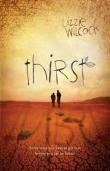 This image has been sourced from online.4838246368755579974.jpg
This image has been sourced from online.4838246368755579974.jpg Thirst Lizzie Wilcock , 2015 single work children's fiction
Thirst Lizzie Wilcock , 2015 single work children's fictionAbstract: Karanda Hooke doesn’t need anybody or anything. On her way to her sixth foster home, a crash leaves her stranded in the desert with only a backpack, a bottle of water and a stained picture of the mother she hasn’t seen in years. But although there’s no civilisation for miles and miles, for the first time, she feels like she is where she belongs, like she has a future ahead of her. There’s only one thing in her way . . . eight-year-old Solomon. As the two children make their way through the outback, Karanda and Solomon have a few lessons to learn about the ties that bind us—and one link that might come as the biggest surprise of all.
Two children learn to survive in the desert, including hunting and surviving on bush food. Water is scarce throughout the novel but still a central theme and presents itself in a variety of ways: rain, floods, empty water bottles and of course thirst.
-
Abstract: Rick is coming to visit again. But will he recognise the farm? Will he have as much fun as last time? Same friend. Same farm. Totally different landscape.
Two Summers shows the stark differences in a landscape between two summers, one before, and one after a drought. The impact on both humans and animals is shown.
-
 This image has been sourced from online.7461024133466273546.jpg
This image has been sourced from online.7461024133466273546.jpg The Waterhole Graeme Base , 2001 single work picture book
The Waterhole Graeme Base , 2001 single work picture bookAbstract: As ever growing numbers of animals visit a watering hole, introducing the numbers from one to ten, the water dwindles...
Each page contains a cut out circle to replicate the waterhole, upon turning each page it becomes obvious that the circle and therefore the waterhole is becoming smaller. Following ’10 kangaroos’, the next double paged spread simply states ‘And all the animals went away.’ The landscape is grey, deteriorated and dead. There are still hidden animals in the illustrations but they are all extinct species. While the book is primarily about the cyclical nature of seasons and the weather, droughts and floods, etc, the presence of human habitation in the top left hand corner may suggest humans are at least impacting such events.
-
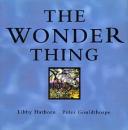 This image has been sourced from online.5111161896748447630.jpg
This image has been sourced from online.5111161896748447630.jpg
 This image has been sourced from online.8509622217534517372.jpg
This image has been sourced from online.8509622217534517372.jpg The Wonder Thing Libby Hathorn , 1995 single work picture book
The Wonder Thing Libby Hathorn , 1995 single work picture bookAbstract: The spare text and bold illustrations celebrate the wonder of water on every continent on earth.
The Wonder Thing is all about water and how it provides for an impacts all humans, animals and plants. The animals in the illustrations are often drawn to look directly at the reader, seemingly imploring readers to understand the necessity of the resource for all life.
-
-
You might be interested in...

- An Overview
- A Brief History Part I: Settlement to Post-War (Forthcoming) In Progress
- A Brief History Part II: 1970s to Present Day (Under Development) In Progress
- Aboriginal Stories and the Environment
- Landscapes and Settings
- Biodiversity and Threatened Species
- Caring for the Environment
- Sustainability
- Built Environments
- Environmental Degradation
- Disasters, Climate Change and Global Warming
- Poetry, Film and Other Narrative Forms
- Education and the Australian Curriculum
- Authors, Illustrators and Publishers
- Award-winning Environmental Literature
- Bibliography
- Project Team and Acknowledgments

- An Overview
- A Brief History Part I: Settlement to Post-War (Forthcoming) In Progress
- A Brief History Part II: 1970s to Present Day (Under Development) In Progress
- Aboriginal Stories and the Environment
- Landscapes and Settings
- Biodiversity and Threatened Species
- Caring for the Environment
- Sustainability
- Built Environments
- Environmental Degradation
- Disasters, Climate Change and Global Warming
- Poetry, Film and Other Narrative Forms
- Education and the Australian Curriculum
- Authors, Illustrators and Publishers
- Award-winning Environmental Literature
- Bibliography
- Project Team and Acknowledgments

